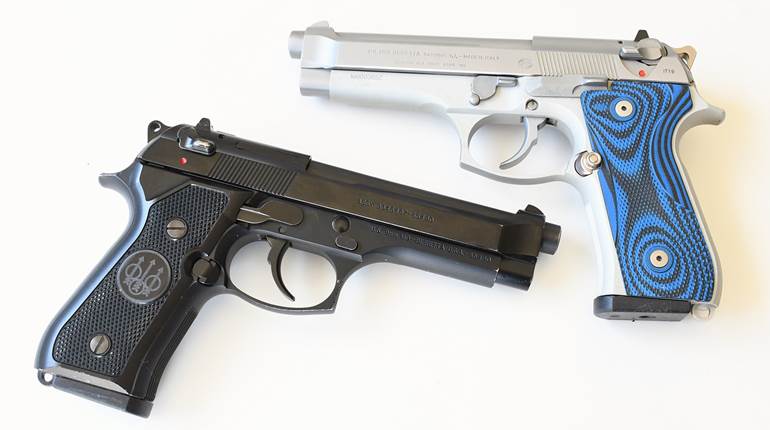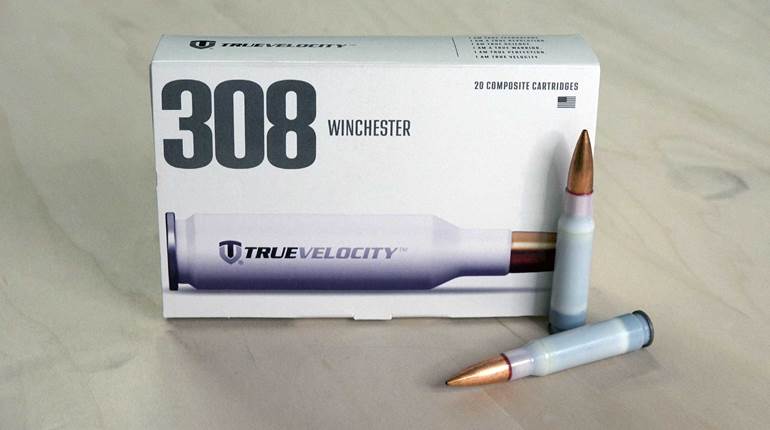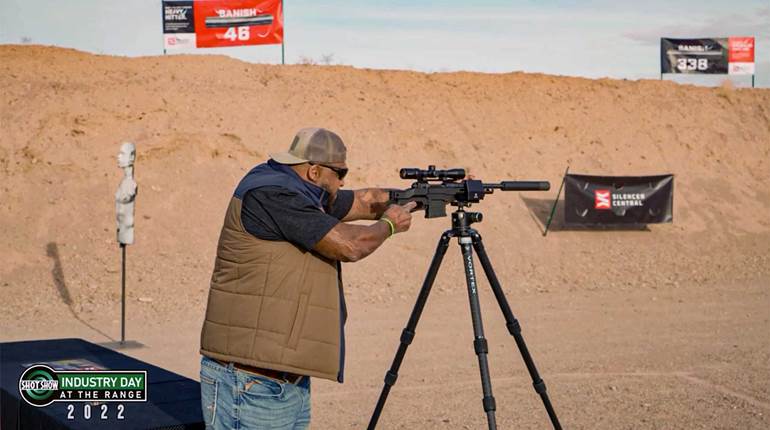
Founded in Gardone, Italy, in 1526, Beretta is not only the world’s oldest firearms manufacturer, but the family-held company is the oldest continuous maker of anything. Period. Cavaliere Ugo Gussalli Beretta has written about his concerns about the future of firearm manufacturing in Maryland, but the move surprised both the firearm industry as well as Maryland media outlets. At stake were good manufacturing jobs that have been a boon to Prince George’s County, Md. Maryland’s loss is Tennessee’s gain.
All manufacturing, which includes the standard sidearm of the U.S. military, the 9x19 mm NATO U.S. M9, which still has active contracts, will move to Tennessee—although all current government M9 orders will be finished in Maryland so as not to disrupt deliveries to out troops. Beretta is not vacating the “Old Line State” completely, though, as the company headquarters and some gunsmithing and repair operations will remain in Accokeek, Md.
Also, it appears its sales and marketing and some executives will remain there, as will Benelli USA and Stoeger. Benelli and Stoeger need more room for expansion anyway. The buildings are paid for; you don’t become about a 500-year-old company by being stupid.
Beretta plans to offer positions to 160 of its workers to make the move. And they are not doing it by e-mail. Each of its essential, valued workers has been or will be called in individually and asked to come to Gallatin. Many key employees have already agreed to do so. And as it expands, it is in area where the workforce is ready. More on that later.
The consequences of the anti-gun legislation passed last year in Maryland and the current governor’s fascination with additional gun control in the state are clear. Not only did the company choose not to expand in the state, but now the jobs that have been there since the 1980s will be moving from a hostile climate to a hospitable one.
Maryland, My Maryland
So how did Beretta end up in Maryland anyway? In a word, acquisitions, something Beretta is very good at. Firearms International (FI), which was mostly an importer—and a huge player in its day—opened up a light manufacturing facility, then a gunmaking operation, in Accokeek, Md., in the 1960s. My former boss, the late Pete Dickey, made, imported, marketed and sold guns for FI (first in Washington, D.C.) long before he started writing about them as Technical Editor of American Rifleman. But FI was acquired by the Garcia Corp., which was the importer for Beretta in the United States for some time, and Garcia was eventually bought by Beretta. With it, came some land off Indian Head Highway (Route 210) and a facility in southern Maryland just outside of Washington, D.C. At that facility, Beretta made guns domestically that could not be imported due to the point system imposed by the Bureau of Alcohol, Tobacco and Firearms. When Beretta’s Model 92 pistol won the U.S. Army contract in 1985, the Italian maker needed a place to build them in the United States. Thus, Accokeek. And it was close enough to the Pentagon that a general could pop down for the afternoon to see the sidearms issued to his troops as they were being made.
Last year’s legislative session made it clear that there was no reason for Beretta to expand in Maryland. Onerous gun control laws pushed by Democratic Gov. Martin O’Malley and quarterbacked by Sen. Mike Miller reached a fever pitch—especially when the bill hit the floor for amendments. In the words of one Beretta executive, the provisions were “horrific” and would have essentially made doing business in Maryland impossible. Want to put a Steady-Grip on a Benelli turkey gun? Nope? Illegal. How about put a 15-round magazine in a box with a U.S. M9 destined for soldier deployed to Afghanistan. Nope, it’s against the law, not in my house, not in our state. Only because of Del. Joe Valllerio were the most heinous provisions stripped out before final passage. If not for him and his efforts, the company would have had to move last October. Seriously, the company would not have been allowed to legally have a single 15-round magazine in its warehouse. Ever.
Choosing a Site
The decision to move manufacturing was evolutionary, and then accelerated. When company leaders asked themselves, “Where can we grow?” The obvious answer was “not in Maryland.” And if the company was to grow or move capacity, then when? Beretta executives wanted to do it at a time of their choosing, not at the whim of an anti-gun politician looking to score points and campaign contributions from Michael Bloomberg. It was a difficult decision, but not an impossible one. But if so, where?
Ugo Gussalli Beretta, Jeff Reh, (a member of Beretta’s board of directors who wears about 10 different hats in the Beretta family of companies) and others decided to start looking during the aforementioned Maryland legislative session. They came up with a list of states that were solidly pro-gun and pro-hunting; ones likely to stay that way. They eliminated those too far north (weather) and too far west (logistics) and then looked at them through 25 additional and different categories. They included business environment, quality of the potential workforce, infrastructure, educational resources, economic incentives (of course) and many more. They ended up with 80 potential sites in seven states—sites Beretta executives visited in the span of three months. The sites were then divided into categories, “A” or “B,” and quite a few were visited and ruled out by Franco Beretta himself. On the list were sites in Georgia, Kentucky, North Carolina, South Carolina, Tennessee and Virginia. Beretta executives met with the governors of all those states (plus others who did not make the final cut) and their economic development advisors, as well as local politicians and business leaders.
Beretta’s Jeff Reh told me in no uncertain terms that Virginia was taken off the table due to the election of longtime Democratic operative Terry McAuliffe as governor last year. Not only is McAuliffe anti-gun, but he ran blatant ads declaring his anti-gun credentials and agenda. Beretta has had a facility in Fredericksburg, Va., for years, but chose not to expand there. Elections have consequences. Thanks, governor.
At one meeting—of a site, sadly, not selected in North Carolina—when members of the city council were informed the company looking at their community was Beretta, numerous councilmen reached into their wallets and proudly pulled their NRA Life membership cards and flopped them on the conference table. The governor of North Carolina, Pat McCrory, met the Beretta site seekers at the airport with a warm handshake and his full support. South Carolina’s Nikki Haley, too, rolled out the red carpet. Governor Haley, by the way, tries to visit all the major manufacturers and employers in her state once a year—including the gunmakers.
Why Tennessee?
When it became clear that there was no future for Beretta in Maryland (for the record, I was born there, went to the University of Maryland and still have relatives there), the company looked at other expansion locations. Once the search resulted in the final site, the Beretta family asked the company’s managers to look at not just expanding, but moving all manufacturing as soon as possible. Even though announcements went out stating all current M9 contracts would be Accokeek, the Beretta family decided to move all manufacturing, kit and caboodle, to Gallatin as soon as pending contracts were filled.
Never, in all the years Beretta operated its facility in Accokeek, did the governor or even the Prince Georges’ County executive visit the factory—or its workers (and, um, hello, voters) at their machines and benches. Even as Beretta cranked out hundreds of thousands of pistols for the U.S. military, the Maryland State Police and dozens of other law enforcement agencies in the state—let alone hundreds of thousands, if not millions, of law-abiding civilian shooters—was a tour of the state-of-the-art facility worth even a minute of their time.
When Texas Gov. Rick Perry visited in hopes of delivering Beretta to his state, he was told “Governor, you are one more governor than has ever visited us from the state of Maryland.” That string is broken, as most of Tennessee’s political leadership was there for the first shovelful of dirt to be moved, before the first wall was up, before the first machine installed and before the first worker punched a clock. It seemed most of the groundbreaking audience held elected office in the State of Tennessee—be it federal, state or local—and they were in on the ground floor; in this case, dirt that will become a floor.
Reh told me that it wasn’t just the political leadership and economic development team supportive of the company moving there, but educators, clerks at the gas stations and waitresses at the restaurants. I confirmed it at breakfast waiting for the ceremony to begin. In Tennessee, the world’s oldest gunmaker is not shunned. Nor is not ignored, pilloried or vilified. It is welcome.
Congratulations, Beretta, you have found a home with a future, one with respect for your products, your traditions and your workers. When the first M9 is issued to a U.S. service member marked “Beretta USA — Gallatin, TN”—or even when the first humble Pico purchased at a dealer so marked—it will be an historic occasion, and the beginning of a new era for the world’s oldest manufacturer.






































